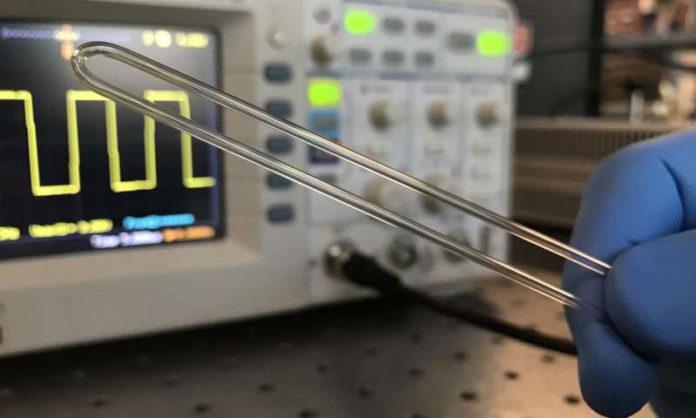Human exposure to hazardous chemicals can occur at the source or the chemical could move to a place where people can come into contact with it. There are different ways that a person comes in contact with toxic chemicals. To reduce this, scientists from the University of California, Riverside have developed a glass tube sensor. This glass tube sensor will boost the speed of chemical toxicity tests and has different applications. For example, to develop new biomaterials.
Scientist suggests that the research has important applications including toxicity research, developmental biology, plant sciences, and biomaterials engineering.
Weight is the important aspect of measuring object. But weighing tiny biological samples in their native liquid environments is not possible with conventional scales. To change this, scientists developed this glass tube sensor that consists of a small piece of a glass tube.
Scientists bent this glass tube in a U-shape and then connect it to an inexpensive speaker. The speaker vibrates the glass tube at its resonance frequency. When a sample is placed in the tube, it allows calculation of sample’s mass, density and volume by changing its frequency.
As proof of concept, the researchers turned to an important research area: toxicology. In this paper, they have used using tiny, fast-developing zebrafish embryos to speed up the things. By using the sensors, they calculated mass changes in zebrafish embryos as they reacted to toxic silver nanoparticles.
Shirin Mesbah Oskui, a doctoral student in Grover’s lab said, “Zebrafish embryos are becoming an important toxicological model species, but until now scientists have not been able to include a very simple measure of health—the organism’s weight—in their panel of measurements. Our research changes that, which will further expand the use of this model in helping protect human health and the environment.”
Heran Bhakta, a graduate student in bioengineering, said, “Biodegradable materials can be used to cover a wound after surgery. But if they degrade too quickly they can leave an open wound and if they don’t degrade quickly enough they can cause complications.”
“Previously, tracking the degradation of biomaterials in a fluid environment has been a painstaking and error-prone process in which the biomaterial sample must be removed, cleaned, weighed and replaced on an ongoing basis. In contrast, our sensors enable us to measure the degradation of even the tiniest biomaterials samples continuously as they break down in a biological fluid.”
“Our technique is so versatile because all objects have fundamental properties like weight. I am excited to see how the sensors will be used by other researchers to address scientific problems in many other fields,” he added.
